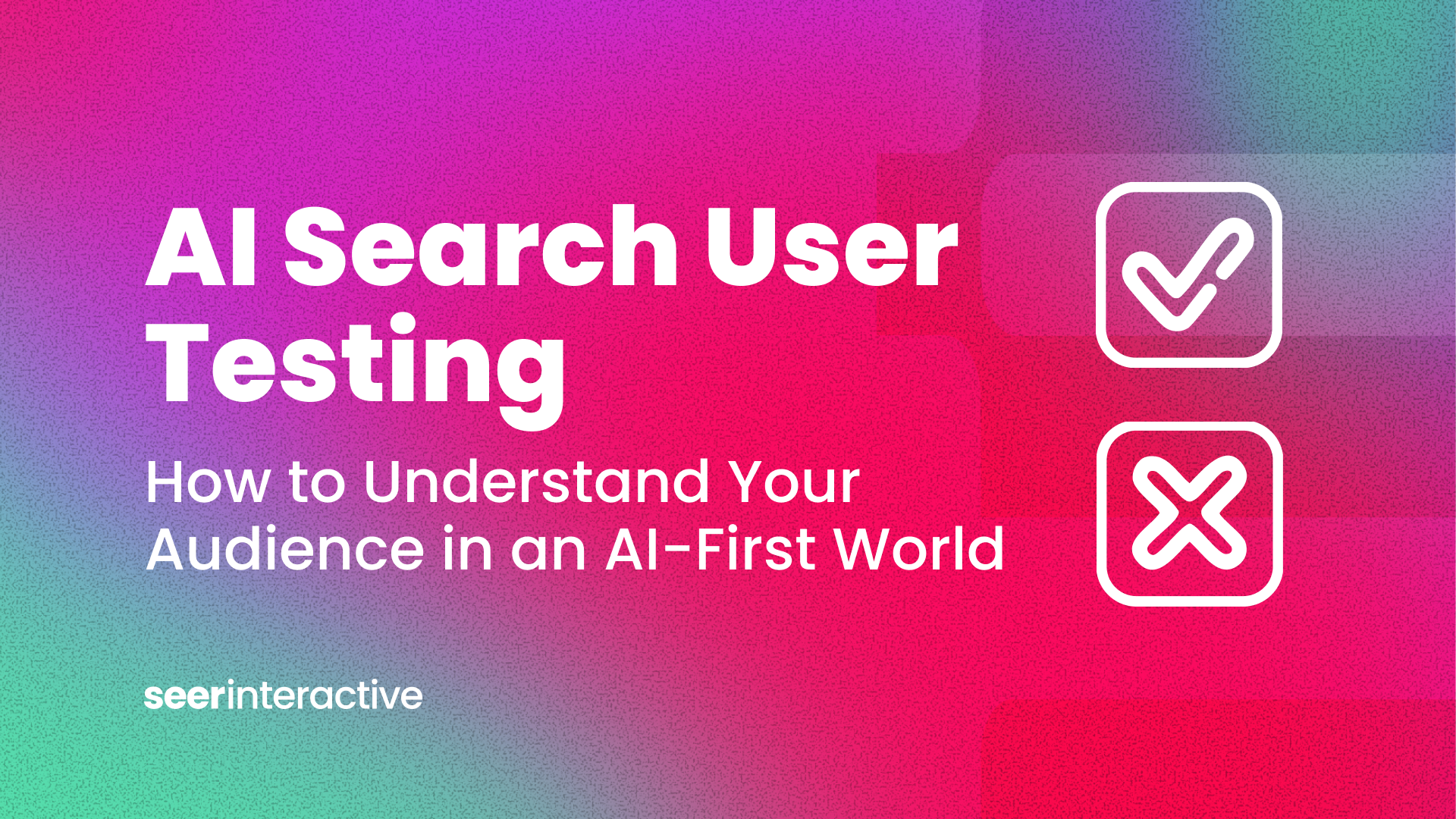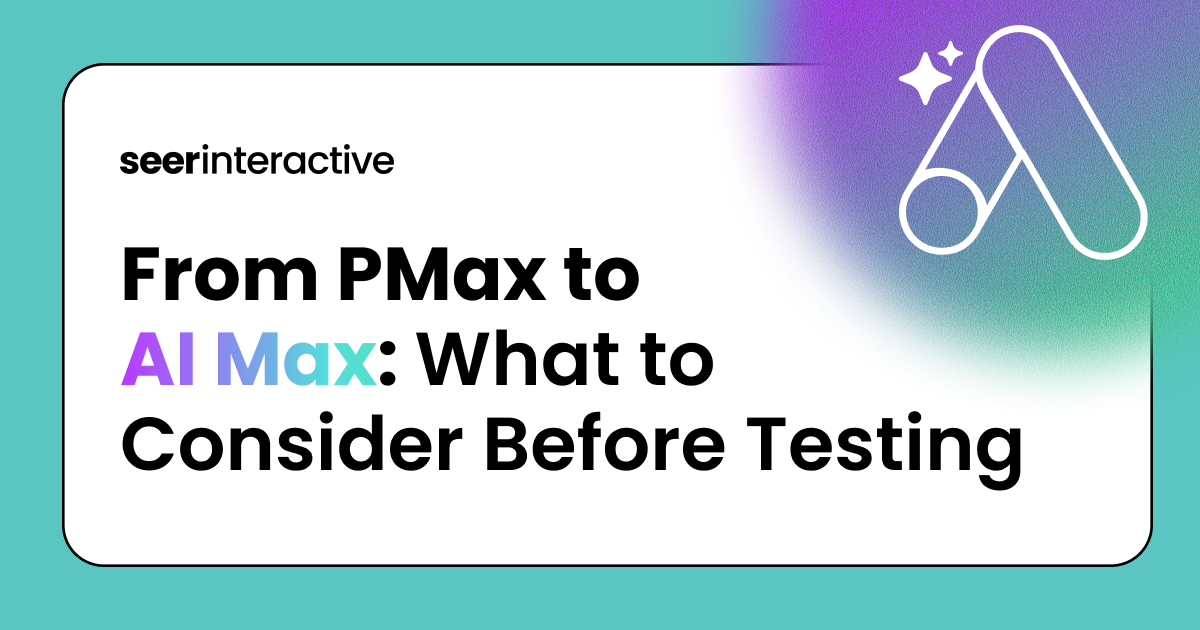For marketers, the pace of AI innovation can feel like drinking from a firehose. Every week, there’s a new breakthrough, a new tool, or a new feature that seems poised to change everything. It’s easy to feel like you’re falling behind.
But here’s the reality: in an era of unprecedented technological advancement, there is no such thing as "behind." We’re all navigating this transformation together, learning and adapting at our own pace.
If you’ve ever worried that you’re missing out or that others are racing ahead, take a deep breath.
What’s important now is dedicating a little time each week to using AI tools. Give yourself some space to explore these tools with genuine curiosity rather than a sense of urgency.
Let’s break down the difference between AI hype and meaningful trends—and figure out where to focus your time and energy.
Feeling Overwhelmed? You're Not Behind
When ChatGPT launched in 2022, many of us felt that initial jolt of anxiety:
Will AI replace my job? Over time, that fear evolved into a more nuanced understanding of human-AI collaboration. But now, with AI advancing at breakneck speed—LLMs releasing new capabilities almost weekly—it’s easy to feel like you’re constantly trying to catch up.
The key to less overwhelm? Distinguishing between breaking news and lasting trends.
- Breaking news: A flashy new tool, a viral AI demo, or a sudden product announcement that dominates LinkedIn for a week.
- Lasting trends: Fundamental shifts in how businesses operate, how work gets done, or how competitive advantage is created.
Take a deep breath.
If an AI tool was released 72 hours ago, you are not behind.
Most of the people discussing it on social media are reacting to news—not actively using it in production. But if businesses are fundamentally restructuring around AI-driven workflows, that’s a shift worth paying attention to.

AI Anxiety: The Pressure to Keep Up
At Seer, we’ve been having a lot of deep conversations in Slack about how AI can feel both exhilarating and exhausting. AI Anxiety is real—the feeling that if you don’t try every new tool, you’ll be left behind. But the truth is, even the experts can’t keep up with everything.
Right now, Hugging Face ranks 3,797 open source models on its Open LLM Leaderboard. Even if you only tested the top 1% —the absolute best of the best—it would take over a month to evaluate all the AI models at a pace of one model per day. And by the time you finished, dozens of new models would have launched. The sheer volume of innovation means nobody has a complete grasp on it all.
The upside: the future of AI is full of possibilities.
The downside: it's still a mystery to everyone.
The key is to control what you can control. AI is here to stay so rather than stressing about staying ahead, focus on what actually impacts your work today. Stop trying to try everything, instead find what works for you.
The Great AI Pivot - How Perspectives Shifted at Seer
The journey of integrating AI into Seer's daily workflows reveals something fascinating about technological adaptation - even the most innovative minds need time to embrace transformative change.
Take our CEO Wil, for instance. Despite being a natural innovator, his relationship with AI changed significantly over time. "In 2022 I wasn't that into it," he admits. "Early 2023, it felt like the people talking about it were just like crypto bros - using the same hype-train promotional tactics around ChatGPT. But by mid-2023, I had seen the light."

This pattern of initial skepticism transforming into enlightened enthusiasm echoes throughout our leadership team. Marissa Foster, our VP of Client Services, shares a particularly nuanced perspective: "For me, back in ~2022, it started with doubt about how significant or useful it would be for the average person. That doubt has transformed into a mixture of excitement and fear - excitement about Seer being at the forefront of AI's application in marketing and getting our team extremely proficient with it; fear about its rapid advancement without robust regulations or governance, and the potential lasting impacts it could have on our lives if not used responsibly."
.png?width=616&height=616&name=AI%20-%20Sonny%20Vasquez%20(2).png)
My own journey (Sonny) with AI mirrors what many in our industry have experienced - a rollercoaster of emotions that feels remarkably similar to the stages of grief. I moved from denial to sheer terror before finally reaching acceptance, but the real breakthrough came with a profound realization: AI isn't here to replace us, but to unleash us. It's taking over the mundane, time-consuming tasks that drain our creative energy, freeing us to focus on the aspects of our work that truly ignite our passion.
This shift in perspective was transformative. What once loomed as a threat now presents itself as an opportunity multiplier. The guardrails that previously constrained our potential haven't just moved - they've virtually disappeared. As I feel now, we've gone from "this is scary" to "our capacity to create impact just grew exponentially." Sure, AI can help us do things faster or more efficiently; but it can also help us reimagine what's possible in our field.

The story of AI at Seer may have started with technological adoption but has grown to be about human adaptation and the courage to embrace change, even when it initially seems daunting. It's a testament to how confronting our fears and doubts can lead to discovering new horizons of possibility.
These personal journeys have taught us valuable lessons about evaluating AI trends - here's what we look for when separating signal from noise
Now that we’ve addressed the emotional side of AI overload, let’s get practical—how do you actually determine if a trend is worth paying attention to?

How to Tell If an AI Trend Actually Matters
Rather than chasing every AI update, ask yourself:
- Is this fundamentally changing how businesses operate? If companies are restructuring workflows, reallocating budgets, or changing hiring priorities because of an AI shift, it’s a real trend. The key is looking beyond surface-level adoption. For instance, when businesses start rewriting job descriptions to emphasize AI literacy, or when quarterly earnings calls increasingly highlight AI initiatives as core to their strategy, you're witnessing a real trend.
- Are long-established businesses launching new products and services, or is this still the realm of start-ups? If major consulting firms revamping their service offerings, enterprise software companies rebuilding their products with AI at the core, or traditional businesses creating entirely new AI-focused divisions – these are all signals that an AI trend has real staying power. Pay special attention when companies start reporting measurable improvements in efficiency, cost reduction, or customer satisfaction directly tied to AI implementation.
- Is mass adoption happening, or is it still niche? Widespread integration signals staying power. For example, generative AI tools like ChatGPT have shown signs of mass adoption: they're being used across industries, by employees at all levels, and are increasingly integrated into common business tools.
- Does it address core limitations of previous tech, or is it just a minor upgrade? Evolutionary steps can be useful, but revolutionary shifts are where true opportunity lies. When evaluating a new AI trend, ask whether it's truly removing long-standing barriers or just optimizing within existing constraints. True breakthroughs often enable entirely new approaches to problems, while minor upgrades typically just make existing approaches more efficient.
For example, the rise of AI-powered search assistants might be a breaking news event today, but the long-term shift toward AI-driven search and decision especially when it comes to making strategic decisions about where to invest your time, resources, and yes, even your money is the trend.
Should I spend my own money on AI subscriptions to stay ahead?
If you don’t have access to any paid subscriptions at work, strongly consider spending $20/month for one of the top tier models (Claude, ChatGPT, Gemini, etc). Yes, the cutting edge models truly are that much better.
Beyond a single $20 subscription, I’d pose a different question: does exploring this technology genuinely excite you?
- Don't spend hundreds a month on tools because you think you'll fall behind professionally if you don't.
- Do spend money if you're thinking: "This new tool is so cool that I'd rather experiment with it than play video games or watch a movie tonight."
I (Jason) can think back to several examples spending my hobby budget on tools and classes has paid off monetarily via salary growth. I can think of other times where I bought tools and classes I never used, which gave me no benefit.
The times my personal investments paid off are when I’ve genuinely had the drive and passion to dig in and learn. Be honest with yourself about how excited you are about these tools.
Know Where to Focus Based on Your Available Time
Your approach to AI should align with the time you realistically have available. Here’s how to prioritize:
1. Minimal Time? Stay Informed
If you only have an hour or two per week:
- Use AI for low-risk tasks, inside or outside of work. Getting hands-on experience is the best use of your time. Here’s some ideas:
- Have an LLM plan your next weekend activity
- Get AI to write a low priority email you’ve been putting off
- Do little experiments like spending a week asking ChatGPT every time you’d normally search Google
- Subscribe to just one high-quality AI newsletter. Here's a few of our favorites:
- Listen to AI-focused podcasts during your commute, or while out for a walk. Here's one we love:
- The Artificial Intelligence Show by the Marketing AI Institute
- Follow a small number of industry experts who keep up with everything and distill the important developments, start with a few from Seer.
2. Moderate Time? Experiment with Core Tools
If you can dedicate a few hours per week:
- Use AI tools for work tasks (content creation, data analysis, automation).
- Tip: Think about what parts of your workflow are repetitive and explore how AI could streamline those tasks.
- Compare different AI models and learn their strengths/limitations. Start with just two of the most popular, big name models.
- Get hands-on with prompt engineering and workflow optimization. Try writing longer, more detailed prompts. Or experiment with asking the same question using a different prompt in a fresh chat to see if you can get better results.
3. Lots of Time? Go Deeper
If you’re serious about leading in AI:
- Learn about advanced AI concepts (temperature, top-p, system prompts).
- Explore open-source AI tools and running models locally.
- Start building AI-powered automations or tools for your team.
4. Feeling Stuck? Shift Your Mindset
If AI feels overwhelming and you’re worried about being left behind:
- Reframe AI as an opportunity rather than a threat.
- Focus on how AI can enhance your work, not replace it.
- Start small—integrate one AI-driven workflow at a time.
Final Thoughts: Setting the Standard
There’s no official playbook for keeping up with AI innovation—because we’re all writing it as we go. That means you have an opportunity to define best practices, experiment with workflows, and help shape how AI is integrated into your field.
Rather than stressing about staying ahead, focus on strategically engaging with AI in a way that fits your goals, time, and interests. The real competitive advantage isn’t just knowing about AI—it’s learning how to use it effectively.
So, are you in? Don't sit back and watch AI transform industries—be part of shaping its future.



